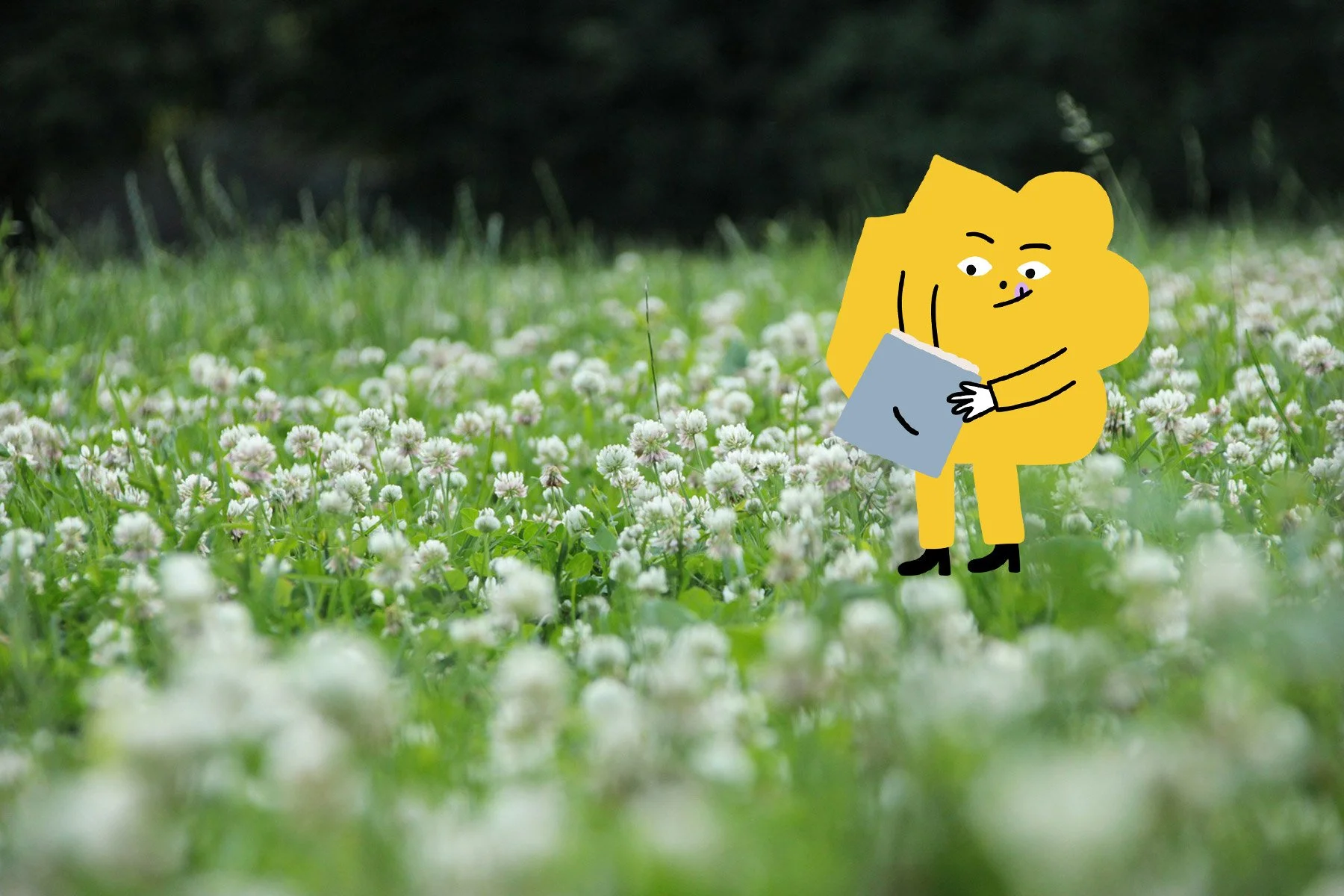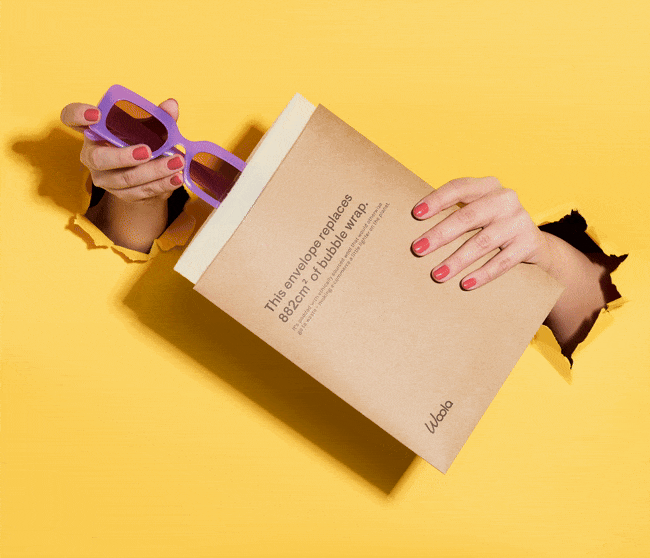How do various packaging materials affect the environment?
Packaging plays a bigger role in environmental harm than most people realise.
If you’ve ever wondered how your shipping materials impact the planet, you’re not alone. As ecommerce continues to grow, so does the waste. Most of it comes from single-use packaging that’s designed for low cost, not sustainability. And while businesses want to do better, navigating the maze of all the options out there can feel overwhelming.
We’ll break down how various packaging materials impact the environment. Think of it as a cheat sheet for choosing packaging that aligns with your brand's sustainability values (and keeps your product safe and beautiful).
“I honestly believe that the best waste is the one you don’t produce.”
— Nicolas Katkoff, Sales Manager at Woola
Plastic packaging
Source: Fossil fuels
Main impact areas: Deforestation, mountaintop removal mining (MTR), greenhouse gas (GHG) emissions, acid mine drainage (AMD), acid rock drainage (ARD), oil spills
Recyclable: Sometimes
Negative impact rating: 10/10
Plastic packaging is everywhere — and that’s the problem. While it's cheap, lightweight and water-resistant, it's one of the most polluting packaging materials in the world:
Over 141 million tonnes of plastic packaging were produced globally in 2021.
Around 36% of all plastic produced is used in packaging, most of which is single-use.
Less than 9% of plastic gets recycled. The rest ends up in landfills or the environment, taking hundreds of years to break down.
Plastic packaging is a major source of microplastic pollution.
“Fossil fuels are the biggest contributor to climate change, and plastic, especially in packaging, is the main contributor to pollution.”
— Anna Liisa Palatu, CEO and Co-founder of Woola
Plastic packaging is designed for convenience and affordability. Its low production costs and versatility make it an attractive option for businesses, but the environmental cost is staggering.
The sheer volume of waste generated, combined with the ineffectiveness of recycling plastic, often means plastic finds its way into ecosystems. Once there, it disrupts wildlife, contaminates food chains and contributes to the long-term degradation of our natural environment.
It's a short-term solution with a long-lasting negative impact.
Paper and cardboard
Source: Wood pulp
Main impact areas: Deforestation, water usage
Recyclable: Yes
Negative impact rating: 5/10
Paper and cardboard are often seen as sustainable alternatives, and in many ways, they are. They come from renewable sources and are widely recyclable. Additionally, paper decomposes much faster than plastic, often within two to five months in a landfill.
While paper is a step up from plastic, this packaging material also has its downsides and an environmental impact:
The paper and pulp industry is the fourth-largest consumer of energy globally.
About 40% of global industrial wood harvest goes into paper production.
Producing one tonne of virgin paper requires around 24 trees and 60,000 litres of water.
What makes paper and cardboard appealing is their familiarity and recyclability. They're widely accepted in recycling systems and are biodegradable, reducing their likelihood of long-term pollution. But the production process can be resource-heavy, especially when using virgin fibres. Water consumption, deforestation, and energy use during pulping are major concerns.
Brands looking to lower their impact should prioritise FSC-certified recycled paper products, look for right-sized paperboard packaging, and ensure their packaging doesn’t contain plastic coatings or liners that hinder recyclability.
P.S. When it comes to postal packaging, you can replace cardboard boxes and paper-padded envelopes with Wool Envelopes — they're shockproof, water-resistant, fire-retardant, and sustainable.
Glass
Source: Silica sand
Main impact areas: Deforestation, limestone mining, GHG emissions
Recyclable: Yes, but resource-heavy
Negative impact rating: 6/10
Glass packaging gives a sense of quality and permanence. It’s chemically inert, doesn’t absorb odours or flavours, and adds a premium feel to everything from skincare serums to small-batch supplements.
For customers, glass signals purity and durability. For brands, it offers clarity — literally and figuratively. But while its end-of-life story is more promising than plastic, its beginning is far from low-impact:
Glass production emits around 1.1 kg of CO2 per kg of glass.
It requires high temperatures (around 1,500°C), making it energy-intensive.
Transporting glass adds to its environmental impact due to its heavier weight.
Glass is heavier than most alternatives, increasing emissions during shipping. To make glass more sustainable, brands should aim to use recycled glass (cullet), promote reuse systems like bottle returns, and consider local sourcing to reduce transport emissions.
Glass shines brightest in closed-loop systems where its reuse potential is fully realised.
A great example of a closed-loop glass system is Orora and Treasury Wine Estates (TWE). They have joined forces to develop a closed-loop system for recycling glass from TWE’s packaging centre. 100% of the cullet received goes back into the furnace at Orora Glass, where it is melted down so that it can be made into new wine bottles.
Aluminium
Source: Bauxite ore
Main impact areas: Deforestation, soil erosion, and water contamination
Recyclable: Yes, but resource-intensive
Negative impact rating: 5/10
Aluminium is another champion of recyclability. Recycling aluminium saves up to 95% of the energy required to produce it from raw materials. But bauxite mining (its primary source) is environmentally destructive:
Producing one tonne of virgin aluminium emits about 17 tonnes of CO2.
Bauxite mining leads to deforestation, soil erosion, and water contamination.
Around 75% of all aluminium ever produced is still in use today.
Aluminium has a remarkably high recovery rate in well-functioning recycling systems. Its durability and resistance to corrosion make it ideal for repeated use, particularly in beverage and cosmetic packaging.
But its sustainability hinges on recycled content, as virgin aluminium production is one of the most energy-intensive industrial processes on the planet. Brands that opt for aluminium should transparently communicate the recycled content of their packaging and guide customers toward proper disposal.
Bioplastics
Source: PBAT and PLA
Main impact areas: Pollution, global warming
Recyclable: Yes, but requires certain conditions
Negative impact rating: 7/10
PBAT Poly(butylene adipate-co-terephthalate) and a plant-based polymer PLA (polylactic acid), are usually derived from or combined with some form of starch to produce bioplastics. Although bioplastics are degradable, they're not always biodegradable. Effectively, this usually means that the material can be industrially composted but not composted at home:
When bioplastics are used, it’s important to mark the correct way of disposal, and ideally, give proof with 3rd party certifications. Pictured: biodegradable packing peanuts that came with a note saying “the fill is biodegradable”.
Most compostable packaging only breaks down in industrial composting facilities.
If sent to landfill, bioplastics behave like regular plastic.
Some bioplastics (like PLA) require high heat, moisture and microbial activity to degrade.
Only 1% of global plastic production is currently bioplastics.
Bioplastics sound great on the surface as they're made from plants, not oil. But the devil is in the decomposition. Many "compostable" products won’t break down in home compost bins and instead require industrial composting environments that aren't widely available. This is confusing to consumers, as the awareness around the differences between at-home and industrially compostable bioplastics is very low.
Worse still, if sent to landfill or incinerated, they offer no real benefit over traditional plastics. They also risk contaminating plastic recycling streams.
So, the bottom line is: for bioplastics to make a real difference, collection systems and consumer education must catch up fast. After all, bioplastics and plastics made from fossil fuels are often visually indistinguishable — so correct end-of-use handling depends on the customer reading the fine print.
Fabric-based packaging
Source: Mainly cotton
Main impact areas: Deforestation, water scarcity
Recyclable: Yes
Negative impact rating: 4.5/10
Cotton bags, linen wraps, and other fabric-based packaging feel premium and are often reused. But they also come with environmental trade-offs.
Producing 1 kg of cotton uses up to 20,000 litres of water.
Cotton cultivation occupies 2.5% of the world’s arable land but consumes 200,000 tons of pesticides and 8 million tons of fertilisers annually.
Fabric packaging is rarely recycled due to mixed fibres, dyes, or contamination.
Fabric-based packaging taps into a sense of luxury and care. It adds a tactile, high-end touch to unboxing experiences. But its environmental impact varies significantly depending on the material and lifespan. Cotton in particular has a hefty environmental impact, largely due to its thirst for water and high pesticide use.
While reusable, fabric packaging often lacks a true end-of-life pathway. Encourage your customers to get creative with reuse, and choose organic or recycled fabrics when possible to reduce resource intensity.
Foam and polystyrene
Source: Expanded polystyrene
Main impact areas: Microplastics, ocean pollution, harming animals
Recyclable: Sometimes
Negative impact rating: 8/10
Expanded polystyrene (EPS), often used in foam packaging, is cheap, light and insulating. But it's also one of the worst offenders for pollution.
EPS is not biodegradable and can take over 500 years to decompose.
It breaks into small fragments easily, becoming a choking hazard for animals.
It's rarely accepted in curbside recycling programmes.
The main selling point for foam packaging is its performance — great cushioning, low weight, and low cost. But from a sustainability perspective, things look drastically different. EPS often ends up in nature, where it shatters into microplastics.
Its low density also makes it uneconomical to recycle, so it mostly heads to landfills. For retail and ecommerce brands, using foam signals an outdated approach. Creative sustainable packaging alternatives like mushroom-based materials, bio-foams made from upcycled food waste or other sustainable protective box packaging offer far better outcomes with similar protective properties.
Wood
Source: Trees
Main impact areas: Deforestation, loss of habitat
Recyclable: Yes, depending on the condition
Negative impact rating: 5/10
Wooden packaging, such as crates or boxes, can be reused, recycled, or composted. But its impact depends on the forestry practices behind it.
Unsustainable logging leads to deforestation and habitat loss.
Forests absorb around 2.6 billion tonnes of CO2 per year, making deforestation a major climate risk.
Certified wood (e.g., FSC-certified) helps ensure responsible sourcing.
Wood communicates craftsmanship and care. In premium packaging, it’s often associated with value and durability. But without sustainable forestry practices, it risks contributing to biodiversity loss and climate change.
When sourced from managed forests or made from waste wood, its environmental impact is far lower. Wood packaging is also great for reuse or upcycling. Brands that want to use it should look for certification and be transparent with customers about sourcing.
Waste wool
Source: Sheep
Main impact areas: Agriculture, processing
Recyclable: Yes
Negative impact rating: 2/10
Now, let’s talk about wool — specifically waste wool. Over 100,000 tonnes of coarse wool (not suitable for the textile industry) go unused every year in the EU alone. So, wool packaging stands out, not just for how it upcycles a waste material but also because it looks good and helps you show that you care about sustainability.
Here’s the lowdown on the impact of wool packaging:
While raising sheep has an impact on the environment, it’s worth noting that in the case of waste wool, it’s a byproduct that would otherwise be burned or buried. As such, the impact of sheepherding is not “counted,” according to third-party Life Cycle Assessment (LCA) experts we at Woola have consulted.
Wool needs to be cleaned (washed and carded) before it can be turned into packaging. This uses water and other resources, and adds transportation emissions to its impact.
“It's not just better for the planet — it’s a better product, period.”
— André Persson, Creative Director at agood company on Woola packaging
Wool decomposes in a few months, releasing useful nutrients back into the soil.
Wool is a “naturally high-tech” material. The fibres have great protective properties, designed by nature.
Wool offers the rare blend of performance and sustainability. It boasts a bunch of high-tech features you’ll rarely see in other sustainable packaging materials:
Durable
Shock-proof
Fire-retardant
Water-resistant
Home compostable
Reusable and recyclable
Damn good looking
It cushions fragile items well and biodegrades safely in nature. At Woola, we show just how far you can go when giving products a second life.
Woola has replaced over 250,000m2 of bubble wrap with wool packaging. It tells a story of circularity, craftsmanship, and care.
Plus, it’s a delight to unbox. The kind of sustainable statement your customer will remember — and likely even reuse.
What does this all mean for ecommerce brands?
Packaging shouldn’t just be functional. It’s your brand message, a customer experience, and a climate statement all rolled into one. Any material you choose has an environmental consequence — some that last a few months, and others that linger for centuries.
Wool-based packaging does way more than simply tick the sustainability box. It offers a story your customer can hold. And at Woola, we’re here to help you tell it.
Talk to our sales team, or request a free Woola sample to experience the difference yourself.










